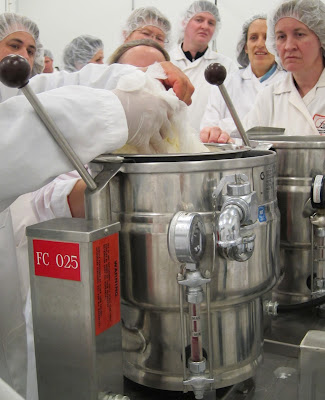Integrative Thinking
The Opposable Mind: How successful leaders win through integrative thinking by Roger Martin
Roger Martin’s book is a very accessible study of how successful business leaders resolve conflicting opinions, question long-standing points of view and develop creative solutions to their problems. The book is based on interviews with a number of successful leaders, many of whom are Canadian, and provides concrete tools that all of us can use to improve our decision-making capacity. I took three specific ideas away with me:
Existing models ≠ Reality
Martin defines integrative thinking as “the ability to face constructively the tension of opposing ideas and, instead of choosing one at the expense of the other, generate a creative resolution of the tension in the form of a new idea that contains elements of the opposing ideas but is superior to each.”
We avoid complexity by accepting either/or solutions rather than drawing out the best elements of each and combining them as a creative new option. Martin uses Isadore Sharp, the founder of the Four Seasons hotel chain, to illustrate this principle. Sharp combined the comfort and intimacy of a small, no-frills hotel with the well-appointed, state-of-the-art facilities of a large downtown hotel by focusing on superior service.
The key to integrative thinking is to “embrace the mess” and to avoid simplification. Focus on what might be in addition to what already exists.
Assertive Inquiry
When we have a discussion with other people, we’re inclined to defend our point of view rather than trying to understand the other person’s position. As a result, we don’t gain any new information that might help us to arrive at a creative resolution.
Martin recommends asking questions in order to gain a deeper understanding of other people’s mental models. Assertive inquiry involves a sincere search for another’s views (‘could you please help me understand how you came to believe that?’) and tries to fill in gaps of understanding (‘could you clarify that point for me with an illustration or example?’) It seeks common ground between conflicting models (‘how does what you are saying overlap, if at all, with what I suggested?’).
Deepen Mastery + Nurture Originality
Martin emphasizes that successful leaders “utilize their experiences to build and deepen their mastery while maintaining and expressing their originality. Experience helps you to identify what is important, to recognize causal relationships and to analyze a complex problem. But mastery without originality produces standard solutions that fail to consider the unique aspects of every situation.
When A.G. Lafley, former CEO of P&G was in charge of naval retail sales at the Atsugi Naval Base, he collected data on which customer populations were buying what goods and at what prices. He held mid-week sales and analyzed the results. But he also expressed his originality by stocking unusual merchandise. He integrated mastery and originality.
See Also:
The Game-Changer: How you can drive revenue and profit growth with innovation by A.G. Lafley and Ram Charan
Roger Martin’s book is a very accessible study of how successful business leaders resolve conflicting opinions, question long-standing points of view and develop creative solutions to their problems. The book is based on interviews with a number of successful leaders, many of whom are Canadian, and provides concrete tools that all of us can use to improve our decision-making capacity. I took three specific ideas away with me:
Existing models ≠ Reality
Martin defines integrative thinking as “the ability to face constructively the tension of opposing ideas and, instead of choosing one at the expense of the other, generate a creative resolution of the tension in the form of a new idea that contains elements of the opposing ideas but is superior to each.”
We avoid complexity by accepting either/or solutions rather than drawing out the best elements of each and combining them as a creative new option. Martin uses Isadore Sharp, the founder of the Four Seasons hotel chain, to illustrate this principle. Sharp combined the comfort and intimacy of a small, no-frills hotel with the well-appointed, state-of-the-art facilities of a large downtown hotel by focusing on superior service.
The key to integrative thinking is to “embrace the mess” and to avoid simplification. Focus on what might be in addition to what already exists.
Assertive Inquiry
When we have a discussion with other people, we’re inclined to defend our point of view rather than trying to understand the other person’s position. As a result, we don’t gain any new information that might help us to arrive at a creative resolution.
Martin recommends asking questions in order to gain a deeper understanding of other people’s mental models. Assertive inquiry involves a sincere search for another’s views (‘could you please help me understand how you came to believe that?’) and tries to fill in gaps of understanding (‘could you clarify that point for me with an illustration or example?’) It seeks common ground between conflicting models (‘how does what you are saying overlap, if at all, with what I suggested?’).
Deepen Mastery + Nurture Originality
Martin emphasizes that successful leaders “utilize their experiences to build and deepen their mastery while maintaining and expressing their originality. Experience helps you to identify what is important, to recognize causal relationships and to analyze a complex problem. But mastery without originality produces standard solutions that fail to consider the unique aspects of every situation.
When A.G. Lafley, former CEO of P&G was in charge of naval retail sales at the Atsugi Naval Base, he collected data on which customer populations were buying what goods and at what prices. He held mid-week sales and analyzed the results. But he also expressed his originality by stocking unusual merchandise. He integrated mastery and originality.
See Also:
The Game-Changer: How you can drive revenue and profit growth with innovation by A.G. Lafley and Ram Charan





Comments